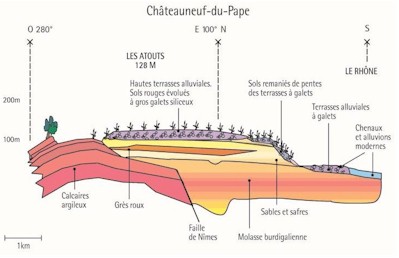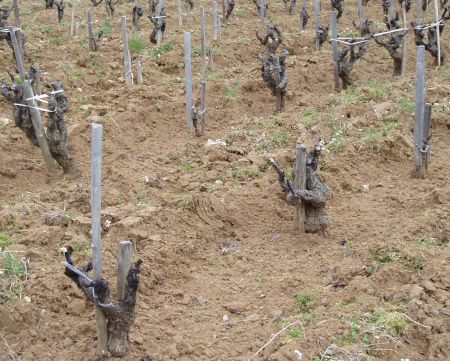| The soil
In connexion with
the rise of the Alps in the Tertiary period was at the same time created a depression in North-South direction vest of the Alps. This depression
was the beginning of the Rhone Valley for a long time partly overfloaded
by the Mediterranean
Sea. - small or large rounded stones (in French galets roules) - lime stones and gravels - sand - clay These elements are always present in different compositions. A general soil profile from Beaucastel shows the following:
It has to be noted to this
profile, that it describes a field like the one seen on the photos to the
right. If the copples are there they will steal the picture after a day of
rain. Generally the big water roulled stones are most common in the Northern part, the Southern part is more gravelled and sandy and the Western part has more limestone. You
can't say that the best wines are made in fields with many stones,
with most clay or with most sand. It's often said that the warmth in the
wines comes from the stones. They collect heath in the sunny days and keep
it for the cooler nights. This is true, but have wines from fields without
stones less quality? No, one of the most famous properties,
Chateau Rayas, has very few stones and much clay. |
|


